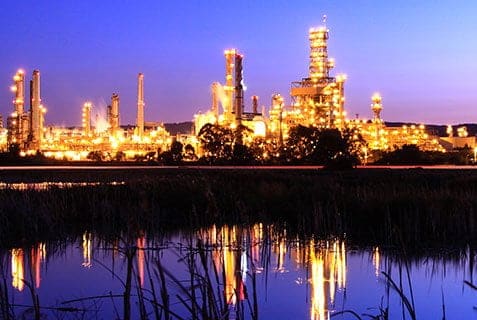 Level and pressure sensors for hazardous areas are designed in a number of ways to prevent ignition of an explosive mixture. Two of the more popular methods for low-power instrumentation are intrinsically safe and non-incendive.
Level and pressure sensors for hazardous areas are designed in a number of ways to prevent ignition of an explosive mixture. Two of the more popular methods for low-power instrumentation are intrinsically safe and non-incendive.
Both limit power significantly, ensuring there is never enough energy to produce a spark and ignite a dangerous gas or dust mixture. In fact, there is more that is the same between the two protection methods than there is different. So, to help you know when & where they’re appropriate, we will focus on the differences.
The difference is really that an intrinsically safe level or pressure sensor is tested for two fault conditions – where excess energy is sent to the sensor. To be classified as intrinsically safe, the sensor cannot heat up too much or spark under fault conditions.
Fault conditions in the real world are must be eliminated within the hazardous zone. This is done by wiring the sensor to an intrinsically safe certified safety barrier. The barrier limits energy above safe levels to ensure no fault conditions on the safe side reach the sensor.
On the other hand, a non-incendive sensor is not tested for fault conditions. Excess energy is still prevented in the field with some kind of power-limiting device, but it’s up to the design engineers to spec out their own method. Using a certified barrier, in this case, is not necessary.
If you’re installing a liquid level sensor in a hazardous area, and the spot is a Zone 0, Zone 1, or Division 1 classified location, you must use an intrinsically safe sensor.
However, if you need a pressure transducer in a location classified as Zone 2 or Division 2, you can get away with a non-incendive transmitter.
Of course, this is an important distinction – one that makes complete sense. Zone/Division 0/1 areas are potentially explosive under normal operating conditions. Therefore, having the redundant safety of an intrinsically safe circuit is important. It would be all too easy for a fault condition in a non-incendive circuit to ignite the normally present combustible gas or dust.
You can get away with non-incendive devices and wiring in a Zone/Division 2 location because the hazardous mixture is present only under abnormal conditions. If everyone is doing their job, an abnormal condition and an electrical fault in the hazardous zone will not happen at the same time.
Non-incendive wiring and instrumentation are often less expensive than their intrinsically safe counter-parts, so using them can save you money. In some cases, Zone/Division 2 areas are expanding, as the release of hazardous gasses is increasingly restricted. This means that as older equipment in these locations is replaced, non-incendive sensors can replace the intrinsically safe sensors.
Along with explosion proof, intrinsic safety and non-incendive devices have their appropriate place in hazardous locations. In the end, each has the same goal of safely deploying reliable electronic devices into explosive environments. Each has a different set of limitations and strengths. Familiarize yourself with these and you’ll be better equipped to manage instrumentation and circuitry in these areas.
We can help you. Contact our Measurement Experts today to learn more about our liquid level sensors and pressure transducers certified for hazardous locations.
top photo credit: Urban_Integration via photopin cc